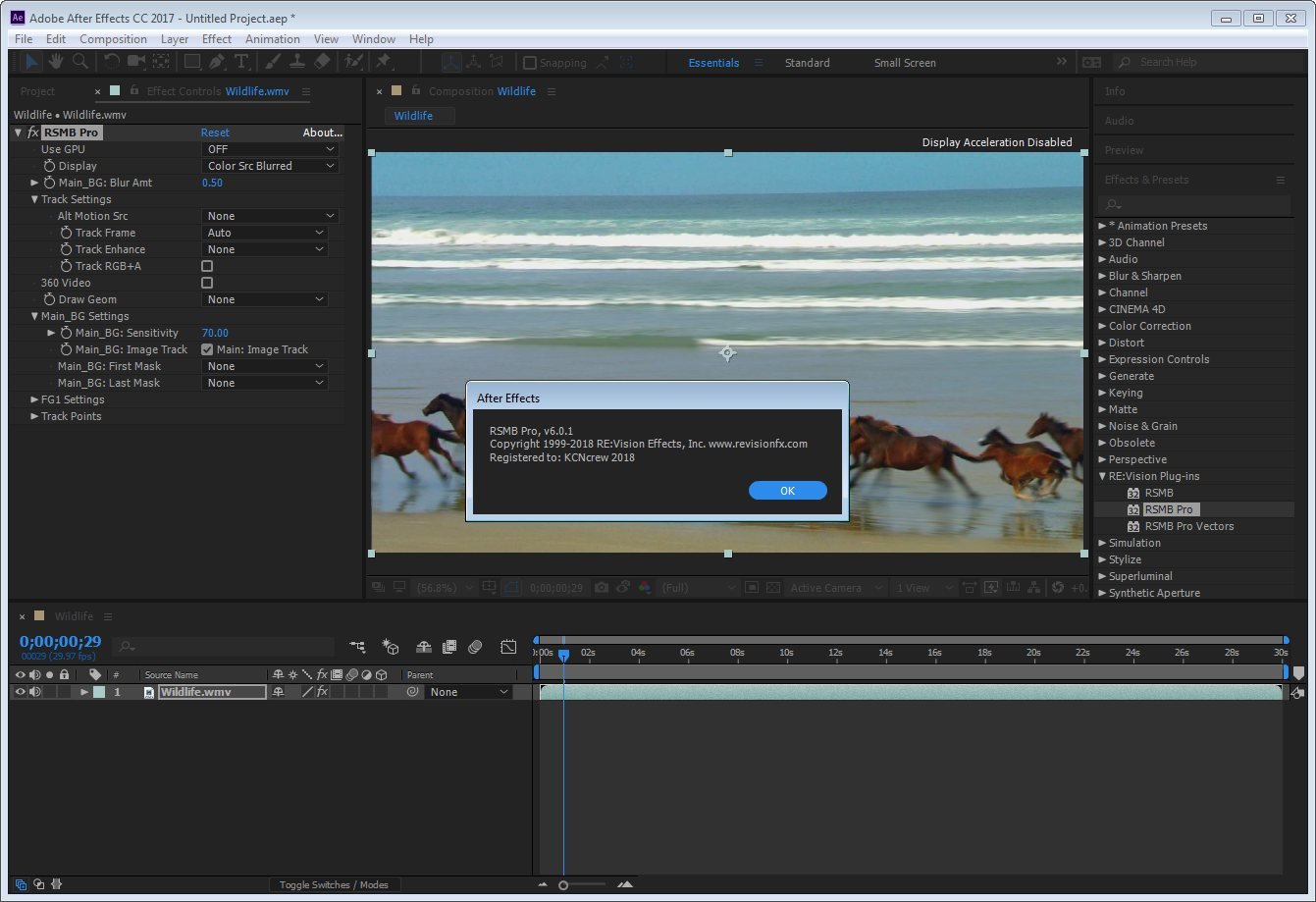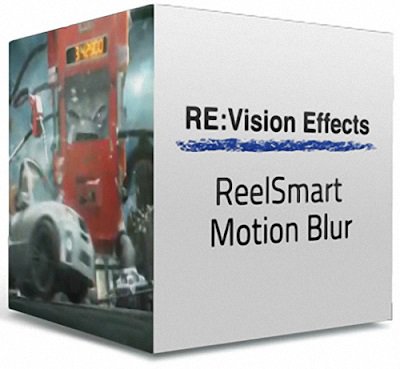

Please note the plugin expects deinterlaced material.


This is useful to know when trying to figure out why RSMB doesn't apply blur to frames from a 3:2 pulldown sequence or animation done on "2"s, etc. The plug-in calculates the motion between two successive frames in a sequence, calculates the motion from one frame to the next, and applies blur based on the calculated motion. ReelSmart Motion Blur supports 8 and 16 bits per pixel and floating point processing. To find out more about RE:Vision Effects and our product lines, visit our website at. RSMB also comes with a companion plugin which allows you to blur based on pre-rendered motion vectors. You can even can blur one sequence by using the motion from another for very interesting effects. Of course you can add as little or as much blurring as you need, and even remove some motion blur. Our tracking technology is at the heart of ReelSmart Motion Blur, so there is no handwork involved. What is ReelSmart Motion Blur? Automatically add more natural-looking motion blur to a sequence using ReelSmart Motion Blur. Heck, to exaggerate motion, could go all the way to 360, or have gradual ramping of shutter angles to pull of special effects.ReelSmartTM Motion Blur User's Manual, OFX plugin version Imagine each frame is crisp like stills but the video having the same smoothness as an in-camera 180 shutter angle. RSMB looks amazing in the demo, and for the price of a cheapish ND filter. This way I have each frame be as crisp as a stills shot for more creative usage. Have each frame be crisp and add desired pixel level motion blur in post. In-camera capture is essentially that, so if the simulation(plugin) is close enough, why darken the whole frame for the ridiculous permanent “180 shutter angle”. If I was shooting films with scripted/planned moves and the end result is for a client/film, probably makes sense to not mess with the status quo- stick to in camera shutter angle of 180.Īnyway, it looks like there are pixel level motion blur plugins that check for each pixel motion in preceding and subsequent frames and we can blur without manually key framing the direction. Even if I don’t have plans on doing anything to the individual motion-blurred frames, the act of swapping filters is just pain for the types of videos I shoot(run and gun family videos). Even if the filter is ultra high quality, the resulting images, individually, are permanently motion-blurry where I have no control.ģ. I hate having a glass in front of my lens because the filter casts weird artifacts.Ģ.
#Reelsmart motion blur software#
I don't know the answer to your question, but presumably actual motion blur will look better than having software guess what was moving between frames, in which direction, and what it looked like in motion. In post, after all VFX/compositing/grading is complete, I use RSMB to add motion blur.
#Reelsmart motion blur iso#
I set the camera aperture for the desired creative effect, the shutter speed to freeze the action for sharpest detail, and the ISO to dial-in the right exposure. I use it after compositing when I need maximum crisp detail for processes like chromakeying, rotoscope, motion or camera tracking, slow-motion speed interpolation, grading, etc. It can certainly handle the scenario your describe. It has all kinds of options to support all kinds of scenarios and has a bit of a learning curve to figure out what options will be best in a given situation. It is reasonably priced and extremely powerful, but it isn't a one-click solution. The plug-in works in both After Effects and Premiere Pro. I have been using RSMB (ReelSmart Motion Blur) from re:Vision effects for years when I need to add motion blur in post:


 0 kommentar(er)
0 kommentar(er)
